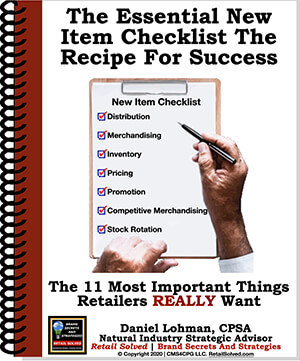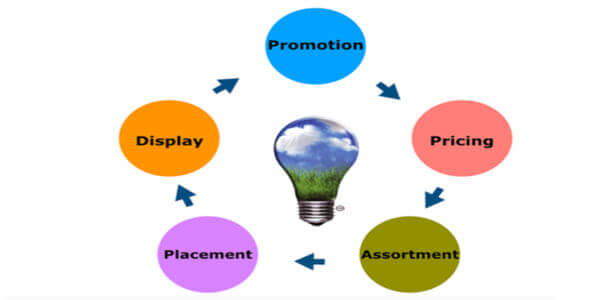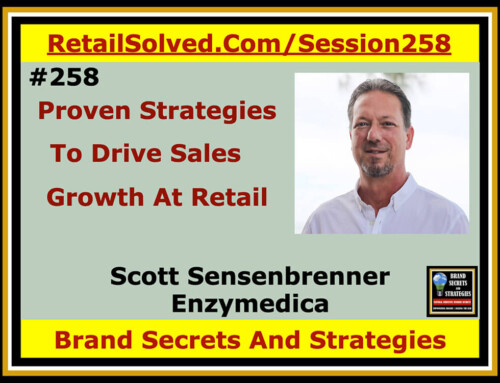Category management is the great equalizer between small brands and their most sophisticated competitors. Is your brand using it to the fullest?
Small natural brands have a substantial disadvantage compared to large brands. What if I told you that there is a way to level the playing field. Would that get your attention? Small brands can take advantage of the best practice strategies used by the big guys. Here’s the best part! Small brands can be agile and flexible in the same way they built their brands. This can give them a significant advantage IF they know when and how to use these strategies effectively.
There is a night-and-day difference between natural and mainstream when it comes to category management, how it is defined, and how it is used. I use the term “true category management” to differentiate the difference. True category management is an essential business strategy that, when done properly, can exponentially increase your growth and help you better satisfy your core customers.
Sadly, many small natural and organic brands either overlook or say they can't afford to invest in it believing it is too expensive. This is a myth. You can have your cake and eat it too. That does not mean that you can afford pricey research firms and sophisticated software that big brands use. It does, however, mean that there are quality workarounds. Also, much of the expensive stuff won’t help you move the needle anyhow. I’ll save that for another discussion.
Here's why you should make the investment in true category management. It provides strategies to help you better connect your products with consumers, manage trade spending, grow sales and profits, optimize product placement, improve shopper satisfaction, and grow sales. Combining every business intelligence resource including; logistics data, syndicated and POS data, shopper/consumer data, etc is the key. In many cases it’s just putting the resources you already have to work for you in a way that supports your growth objectives.
Most of the brands I work with pay for data that they don’t understand or don’t use. The training provided is severely lacking and frequently non-existent. In addition, outside resources make a lot of empty claims saying they will manage the data on your behalf. I have yet to see a presentation produced by a broker/distributor/etc. in natural that is at the caliber of the top brands in the industry. My career was built on competing with the biggest and best brands in the world – and consistently out performing them.
Pulling a canned topline report will not drive sales by itself. But, when you know how to get quality insights from it and apply it, along with other resources, you can build a selling story that will resonate with retailers.
At the very minimum, you should be able to understand the strategies so that you can effectively guide the third party companies you use to support you to help you better reach and exceed your goals and objectives. This is how you get the most from your brokers and distributors. You would not hand your recipe to a co-packer without keeping close tabs on the quality of your product. Similarly, you should not place all of the selling and strategy work in someone else's hands and blindly hope for the best. This is a recipe for failure!
Category management truly is the glue that unites all of the key strategies and business functions to maximize your growth. It helps you identify opportunities for sustainable growth, increased sales, and shopper foot traffic to your brand. When done correctly, it grows brands and satisfies your consumers.
Are you leveraging true category management to the fullest or not at all? Here are the key areas for success:
1. Analytics
Analytics, both basic and advanced, are at the heart of true category management. They provide the road map for achieving your goals. They encompass all aspects of trade management, business planning, scorecarding, assortment analysis, and consumer behavior. When applied correctly, they provide invaluable insights and actionable recommendations.
2. Trade Marketing Support
Trade marketing is the life blood of your brand. It includes all aspects of promotion, pricing, product placement, people, assortment, and merchandising that supports brand development. It includes analysis and evaluations of past events as well as projections for future growth trends.
3. Consumer Insights
Consumer insights include all shopper and consumer-related information including consumer buying and shopping habits. It focuses on providing the best selection of merchandise at the best possible price with the ultimate goal of improving shopper satisfaction.
4. Database Management
Database management, frequently referred to as business intelligence, encompasses several different data sources such as internal and external data sources, syndicated data, retailer POS (point-of-sale data), shopper and consumer data, and marketing data. A talented category manager can help you bring together all the different data sources together in the most useful and insightful way.
5. Shelf Management
Shelf management, typically in the form of schematics or planograms, include product placement and merchandising on retailer shelves. They help the retailer maximize sales per linear foot, drive shopper traffic into stores, increase customer shopping basket size, and they help provide a competitive advantage to the retailer.
6. Category Reviews
Category reviews serve as a review of overall category performance. They provide the framework to retailers and brands to work together in setting goals, sales expectations, and strategic plans for future category growth. Scorecards should be used to help obtain and measure category growth objectives.
7. Retail Sales Support
Category managers should support sales at retail by providing fact-based selling to support every selling opportunity – retailer appointments. Effective category management should provide an unbiased and objective point of view to support the retailer. It should never be used to mislead a retailer. Losing your credibility with a retailer will do long term damage to your reputation.

Want A Competitive Edge? The Recipe For Success
New product innovation is the lifeblood of every brand. New products fuel sustainable growth, attract new shoppers and increase brand awareness. Know the critical steps to get your product on more retailer’s shelves and into the hands of more shoppers.
Empowering Brands | Raising The Bar
Ever wish you just had a roadmap? Well, now you do!
Don’t miss out on all of these FREE RESOURCES (strategic downloadable guides, podcast episodes, list of questions you need to be asking, and know the answers to, the weekly newsletter, articles, and tips of the week. You will also receive access to quick and easy online courses that teach you how to get your brand on the shelf, expand distribution, understand what retailers REALLY want, and address your most pressing challenges and questions.
All tools that you can use, AT NO CHARGE TO YOU, to save you valuable time and money and grow your sales today!
Image is the property of CMS4CPG LLC, distribution or reproduction is expressively prohibited.



